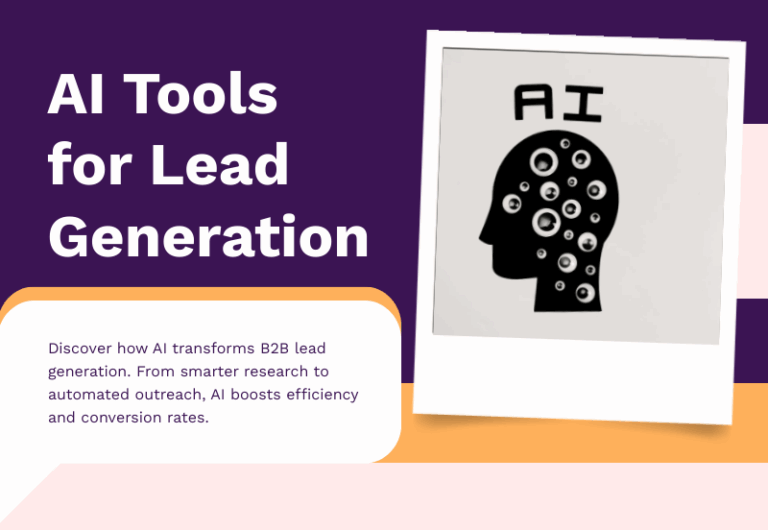Database marketing has emerged as a pivotal strategy in the contemporary business landscape, enabling organizations to harness customer data for targeted marketing efforts. This article delves into the intricacies of database marketing, exploring its definition, evolution, methodologies, benefits, challenges, and real-world applications. By examining statistical insights and industry benchmarks, we aim to prrovide a thorough understanding of how database marketing drives business growth and enhances customer relationships.
In an era where data is often termed the “new oil,” businesses are increasingly leveraging customer information to refine their marketing strategies. Database marketing stands at the forefront of this data-driven approach, focusing on the collection, analysis, and utilization of customer data to create personalized marketing campaigns. This strategy not only enhances customer engagement but also optimizes marketing expenditures by targeting specific segments with tailored messages.

Definition of Database Marketing
Database marketing is a form of direct marketing that utilizes databases of customers or potential customers to generate personalized communications, aiming to promote products or services for marketing purposes. The communication methods can include various addressable mediums, such as direct mail, email, or telemarketing. The primary distinction between direct marketing and database marketing lies in the emphasis on data analysis. Database marketing focuses on employing statistical techniques to develop models of customer behavior, which are then used to select customers for targeted communications.
Evolution of Database Marketing
The roots of database marketing can be traced back to the 1980s when businesses began to recognize the potential of customer data in enhancing marketing efforts. Initially, companies relied on simple mailing lists to reach out to potential customers. However, with advancements in technology and data collection methods, the scope expanded to include comprehensive customer profiles encompassing demographics, purchase histories, and behavioral data. This evolution marked a shift from mass marketing to more targeted, personalized approaches, laying the foundation for modern database marketing practices.

Methodologies in Database Marketing
Implementing an effective database marketing strategy involves several key steps:
- Data Collection: Gathering relevant customer information, including personal details, transaction histories, and interaction records. This data can be sourced from various touchpoints such as websites, social media, and customer service interactions.
- Data Organization and Centralization: Storing the collected data in a centralized system, such as a Customer Relationship Management (CRM) platform, to ensure easy access and analysis.
- Data Analysis and Segmentation: Utilizing analytical tools to uncover patterns and segment customers based on characteristics like demographics, purchasing behavior, and preferences. This segmentation enables the creation of targeted marketing campaigns.
- Personalization and Campaign Execution: Developing personalized marketing messages tailored to each customer segment and delivering them through appropriate channels.
- Performance Monitoring and Optimization: Continuously tracking the effectiveness of marketing campaigns and making data-driven adjustments to enhance outcomes.
Benefits of Database Marketing
The adoption of database marketing offers numerous advantages:
- Enhanced Customer Relationships: Personalized communications foster stronger connections with customers, leading to increased loyalty and retention.
- Improved Marketing Efficiency: Targeted campaigns reduce wasteful spending by focusing resources on high-potential segments, thereby increasing return on investment (ROI).
- Data-Driven Decision Making: Access to comprehensive customer data enables informed strategic decisions, allowing businesses to anticipate market trends and customer needs effectively.
- Competitive Advantage: Leveraging customer insights allows businesses to differentiate themselves in the market by offering tailored experiences that meet specific customer preferences.

Challenges in Database Marketing
Despite its benefits, database marketing presents several challenges:
- Data Privacy and Security: Ensuring the protection of customer data and complying with regulations such as GDPR and CCPA is paramount to maintain trust and avoid legal repercussions.
- Data Quality and Integration: Maintaining accurate, up-to-date, and integrated data from multiple sources can be complex and resource-intensive.
- Technological Requirements: Implementing and managing advanced analytical tools and CRM systems require significant investment and technical expertise.
- Customer Resistance: Over-personalization or perceived invasions of privacy can lead to customer discomfort and potential backlash.
Statistical Insights and Industry Benchmarks
While specific statistics can vary across industries and regions, the overarching trend indicates a growing reliance on database marketing strategies. Businesses that effectively utilize customer data for targeted marketing often experience higher engagement rates and improved ROI compared to traditional mass marketing approaches. However, it’s essential for organizations to continually assess and benchmark their performance against industry standards to ensure the effectiveness of their database marketing initiatives.

Advanced Techniques in Database Marketing
To further enhance the effectiveness of database marketing, businesses are adopting advanced techniques that leverage cutting-edge technologies and methodologies.
Predictive Analytics
Predictive analytics involves using historical data, statistical algorithms, and machine learning techniques to identify the likelihood of future outcomes. In database marketing, predictive analytics can forecast customer behaviors, such as purchase propensity or churn risk, enabling marketers to proactively tailor strategies. For instance, a study highlighted that companies utilizing predictive analytics experienced a 10% increase in sales.
Artificial Intelligence and Machine Learning
Integrating artificial intelligence (AI) and machine learning (ML) into database marketing allows for the automation of complex data analysis processes. AI-driven models can uncover intricate patterns within customer data, facilitating hyper-personalized marketing efforts. For example, AI can analyze browsing behaviors to recommend products in real-time, enhancing the customer experience and boosting conversion rates.
Behavioral Analytics
Behavioral analytics focuses on understanding how consumers interact with digital platforms, providing insights into their preferences and decision-making processes. By analyzing data points such as navigation paths, click patterns, and time spent on pages, marketers can optimize website layouts, content placement, and call-to-action prompts to better align with user behaviors.
Customer Journey Mapping
Customer journey mapping involves visualizing the steps a customer takes from initial contact to final purchase and beyond. By mapping out this journey, businesses can identify critical touchpoints and potential drop-off areas. This understanding enables the optimization of marketing strategies to guide customers smoothly through the sales funnel, ultimately improving conversion rates and customer satisfaction.
Advanced Methodologies in Database Marketing
As database marketing evolves, several advanced methodologies have emerged to enhance its effectiveness:
Data Mining and Pattern Recognition
Data mining involves exploring large datasets to uncover hidden patterns and relationships. In database marketing, this technique enables businesses to identify customer behaviors and preferences that may not be immediately apparent. For example, analyzing purchase histories can reveal associations between products, informing cross-selling strategies. Pattern recognition further aids in detecting trends over time, allowing marketers to anticipate shifts in consumer demand.
Customer Lifetime Value (CLV) Analysis
Understanding the long-term value of customers is crucial for resource allocation. CLV analysis estimates the total revenue a business can expect from a customer throughout their relationship. By segmenting customers based on CLV, companies can tailor marketing efforts, offering premium services to high-value customers while developing strategies to increase the value of lower-tier segments.
RFM (Recency, Frequency, Monetary) Segmentation
RFM analysis evaluates customers based on:
- Recency: How recently a customer made a purchase.
- Frequency: How often they purchase.
- Monetary: The amount they spend.
This segmentation helps identify loyal customers, potential churners, and opportunities for upselling or re-engagement campaigns.
Technological Integrations Enhancing Database Marketing
The integration of advanced technologies has revolutionized database marketing:
Big Data Analytics
The advent of big data has provided marketers with unprecedented volumes of information. Utilizing big data analytics allows for the processing of complex datasets, leading to more accurate customer insights and predictive models. For instance, analyzing social media interactions alongside purchase data can reveal nuanced customer sentiments and preferences.
Internet of Things (IoT)
IoT devices generate vast amounts of data from connected products. By analyzing this data, companies can gain insights into how customers use their products, leading to improved product development and personalized marketing strategies. For example, a smart thermostat company can analyze usage patterns to offer tailored energy-saving tips and product recommendations.
Blockchain for Data Security
Blockchain technology offers a decentralized and secure method for storing customer data. Implementing blockchain can enhance data integrity and customer trust, as it provides transparency in how data is collected, stored, and used. This is particularly relevant in an era where data breaches and privacy concerns are prevalent.
Industry-Specific Applications of Database Marketing
Database marketing strategies can be tailored to various industries:
Retail
Retailers leverage database marketing to personalize promotions, manage inventory, and enhance customer experiences. By analyzing purchase histories and browsing behaviors, retailers can send targeted offers, recommend products, and optimize store layouts to align with consumer preferences.
Financial Services
Financial institutions use database marketing to segment clients based on financial behaviors, risk profiles, and life events. This enables the offering of tailored financial products, such as loans, credit cards, and investment opportunities, improving customer satisfaction and retention.
Healthcare
In healthcare, database marketing assists in patient engagement and education. By analyzing patient data, healthcare providers can send personalized health tips, appointment reminders, and information about relevant services, contributing to better patient outcomes and adherence to treatment plans.
Hospitality
The hospitality industry utilizes database marketing to enhance guest experiences and loyalty programs. By understanding guest preferences and behaviors, hotels and resorts can offer personalized services, targeted promotions, and tailored recommendations for future stays.
Ethical Considerations in Database Marketing
While database marketing offers significant benefits, it also raises ethical considerations:
Consent and Transparency
Obtaining explicit consent from customers before collecting and using their data is fundamental. Businesses must be transparent about what data is collected, how it will be used, and provide options for customers to manage their preferences.
Data Accuracy and Integrity
Maintaining accurate and up-to-date customer data is essential. Inaccurate data can lead to misguided marketing efforts and erode customer trust. Regular data cleansing and validation processes should be in place to ensure data integrity.
Avoiding Discrimination
Marketers must ensure that data segmentation and targeting practices do not lead to discrimination or exclusion of certain groups. Ethical use of data involves promoting inclusivity and fairness in marketing campaigns.
Measuring the Success of Database Marketing Campaigns
Evaluating the effectiveness of database marketing initiatives is critical:
Key Performance Indicators (KPIs)
Common KPIs include:
- Conversion Rates: The percentage of recipients who take the desired action.
- Customer Acquisition Cost (CAC): The cost associated with acquiring a new customer.
- Customer Retention Rate: The percentage of existing customers who continue to engage over time.
- Return on Investment (ROI): The overall profitability of the marketing campaign.
A/B Testing
Implementing A/B tests allows marketers to compare different versions of a campaign to determine which elements resonate best with the audience. This iterative testing leads to data-driven optimizations and improved campaign performance.
Customer Feedback and Surveys
Direct feedback from customers provides qualitative insights into the effectiveness of marketing efforts. Surveys and feedback forms can reveal customer satisfaction levels and areas for improvement.
Trends in Database Marketing
As technology continues to evolve, several emerging trends are shaping the future of database marketing:
Increased Reliance on First-Party Data
With growing concerns over data privacy and the phasing out of third-party cookies, businesses are placing greater emphasis on collecting and utilizing first-party data. This shift necessitates building direct relationships with customers and investing in systems that facilitate the collection of consented, high-quality data.
Hyper-Personalization
Consumers are increasingly expecting personalized experiences. Hyper-personalization involves leveraging real-time data and AI to deliver content, product recommendations, and offers tailored to individual preferences and behaviors. This approach enhances customer engagement and fosters brand loyalty.
Integration of AI and Automation
The integration of AI and automation tools is streamlining database marketing processes, from data analysis to campaign execution. These technologies enable marketers to deliver timely and relevant content, optimize marketing spend, and improve overall efficiency.
Omnichannel Marketing Strategies
An omnichannel approach ensures a seamless customer experience across various channels, including online platforms, mobile apps, social media, and physical stores. By integrating data from all touchpoints, businesses can provide consistent and personalized interactions, enhancing customer satisfaction and retention.
Emphasis on Data Privacy and Compliance
As data privacy regulations become more stringent, businesses must prioritize transparent data practices and ensure compliance with laws such as the General Data Protection Regulation (GDPR) and the California Consumer Privacy Act (CCPA). Building trust through responsible data handling is crucial for maintaining customer relationships and avoiding legal repercussions.



